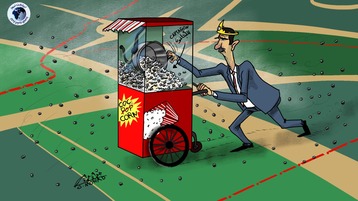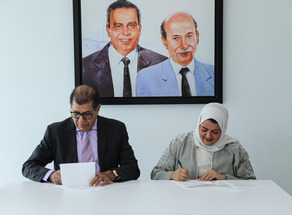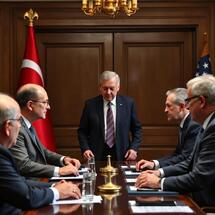-
Postponement of the Hijab and Modesty Law... What’s the Story?!

After months of back-and-forth between the Iranian system council and the Guardian Council (the body overseeing elections), the so-called "Hijab and Modesty Law," consisting of 71 articles divided into five chapters, was finally published on November 30. This law, drafted by clerics, sheds light once again on the essence and starting point of the anti-woman religious fascism aimed at intensifying repression against society, especially women.
According to reports from Iranian government media on December 14, cleric Salimi, a member of the council's presidency, announced that the enforcement of the compulsory Hijab and Modesty Law had been postponed at the government's request for an amended bill. Earlier, the parliament speaker, Ghalibaf, had announced that the law would be communicated to the government and would come into effect starting December 13.
The judiciary submitted the initial draft of this law, titled "Supporting the Culture of Modesty and Hijab," to parliament, with the backing of former president Ebrahim Raisi, following the national uprisings in 2022. These uprisings, which shook the foundations of the regime, forced it to resort to medieval laws to impose more organized control over the explosive Iranian society.
It is noteworthy that the repression of women under the guise of hijab has been the cornerstone of religious fascism policies since the early days of the 1979 revolution. Despite the statements of parliament speaker Mohammad Baqer Ghalibaf, this law does not target the despised morality police but instead reproduces it within a broader and more diverse framework. Various articles of this law define specific duties for ministries, cultural and social institutions, municipalities, and even business owners.
Municipalities and rural councils are tasked with providing the necessary conditions to implement the alleged principles of modesty and hijab in public places like parks, public transportation, and cultural centers. This requires increased control over citizens' daily lives and allows for the presence and direct intervention of regime forces in all public domains.
The Ministry of Intelligence, the National Security Forces’ Intelligence Branch, and the IRGC Intelligence Organization are explicitly tasked with directly confronting women. This article clearly indicates an escalation in the security and judicial dimensions of social control.
Under this law, business owners and executive agency employees face severe penalties if they fail to cooperate in enforcing the law. The "Hijab and Modesty Law" issued by the regime starkly contradicts the principles of the Universal Declaration of Human Rights, the International Covenant on Civil and Political Rights, and agreements regarding women's rights. This law violates the right to freedom of dress, a fundamental human right, imposes the ideological standards of the regime, and effectively deprives women of their right to choose.
Instead of responding to the people's demands for individual freedoms and women's rights and putting an end to discrimination, religious fascism has again resorted to tools of repression and social control. This law is a clear example of a policy that intensifies social pressures rather than alleviating them.
The law's focus on employing various methods of repression - from monitoring public spaces to imposing informant practices - demonstrates the regime's determination to maintain its grip on power at any cost. Experience shows that such policies only serve to amplify public anger and protests.
So far, with the law not yet fully ratified, the state-run "Entikhab" news site stated on December 1: "The provisions of this law are practically unenforceable, and the law contradicts our social conditions to such an extent that even a small percentage of its implementation could predictably lead to severe social crises." Iranian women have repeatedly shown that they will not succumb to such laws. The women's protest movements from past decades, symbolized by the 2022 uprising, represent resistance against repressive and anti-woman policies. Revolutionary Iranian women, pioneers in the struggle for freedom and social justice, will not back down from these measures.
In a statement on December 1, 2024, Maryam Rajavi, the elected President of the National Council of Resistance of Iran, declared: "The anti-woman 'Hijab and Modesty Law' is a criminal and inhumane law that is strongly condemned. Through this unjust law and the use of repressive forces, Khamenei seeks to subjugate society, especially women who stand at the forefront of the struggle against religious fascism. Daily executions and anti-woman laws will not resolve this regime's dilemma."
The Women’s Committee of the National Council of Resistance of Iran has also called on all free Iranian women to confront this criminal and inhumane law with the slogan "Women, Resistance, Freedom."
The shameful and repressive "Hijab and Modesty Law," like other repressive policies of the regime, is doomed to failure due to its contradiction with social realities and the people's demands. The enactment of such laws proves that the regime has no strategy.
Nizam Mir Mohammadi
You May Also Like
Popular Posts
Caricature
BENEFIT Sponsors BuildHer...
- April 23, 2025
BENEFIT, the Kingdom’s innovator and leading company in Fintech and electronic financial transactions service, has sponsored the BuildHer CityHack 2025 Hackathon, a two-day event spearheaded by the College of Engineering and Technology at the Royal University for Women (RUW).
Aimed at secondary school students, the event brought together a distinguished group of academic professionals and technology experts to mentor and inspire young participants.
More than 100 high school students from across the Kingdom of Bahrain took part in the hackathon, which featured an intensive programme of training workshops and hands-on sessions. These activities were tailored to enhance participants’ critical thinking, collaborative problem-solving, and team-building capabilities, while also encouraging the development of practical and sustainable solutions to contemporary challenges using modern technological tools.
BENEFIT’s Chief Executive Mr. Abdulwahed AlJanahi, commented: “Our support for this educational hackathon reflects our long-term strategic vision to nurture the talents of emerging national youth and empower the next generation of accomplished female leaders in technology. By fostering creativity and innovation, we aim to contribute meaningfully to Bahrain’s comprehensive development goals and align with the aspirations outlined in the Kingdom’s Vision 2030—an ambition in which BENEFIT plays a central role.”
Professor Riyadh Yousif Hamzah, President of the Royal University for Women, commented: “This initiative reflects our commitment to advancing women in STEM fields. We're cultivating a generation of creative, solution-driven female leaders who will drive national development. Our partnership with BENEFIT exemplifies the powerful synergy between academia and private sector in supporting educational innovation.”
Hanan Abdulla Hasan, Senior Manager, PR & Communication at BENEFIT, said: “We are honoured to collaborate with RUW in supporting this remarkable technology-focused event. It highlights our commitment to social responsibility, and our ongoing efforts to enhance the digital and innovation capabilities of young Bahraini women and foster their ability to harness technological tools in the service of a smarter, more sustainable future.”
For his part, Dr. Humam ElAgha, Acting Dean of the College of Engineering and Technology at the University, said: “BuildHer CityHack 2025 embodies our hands-on approach to education. By tackling real-world problems through creative thinking and sustainable solutions, we're preparing women to thrive in the knowledge economy – a cornerstone of the University's vision.”
opinion
Report
ads
Newsletter
Subscribe to our mailing list to get the new updates!






















